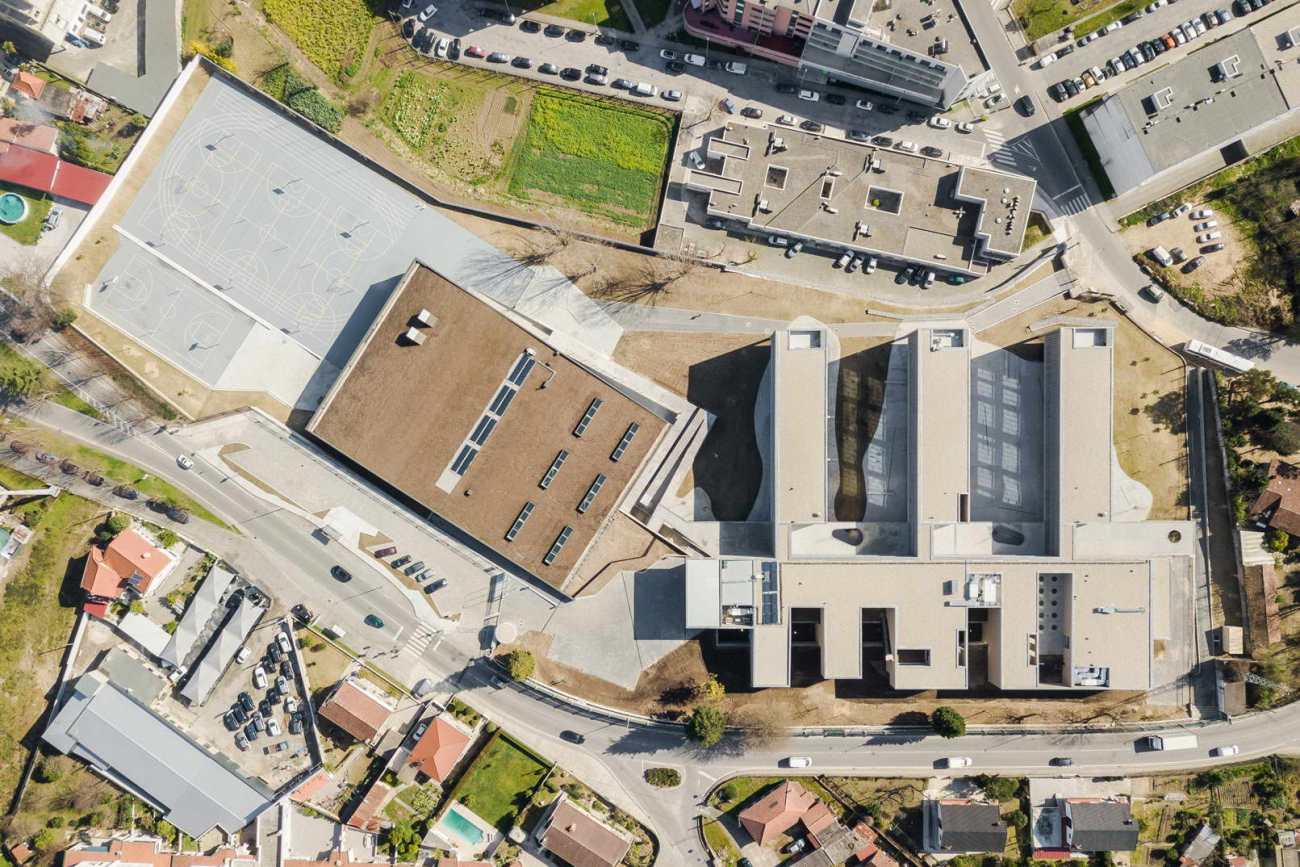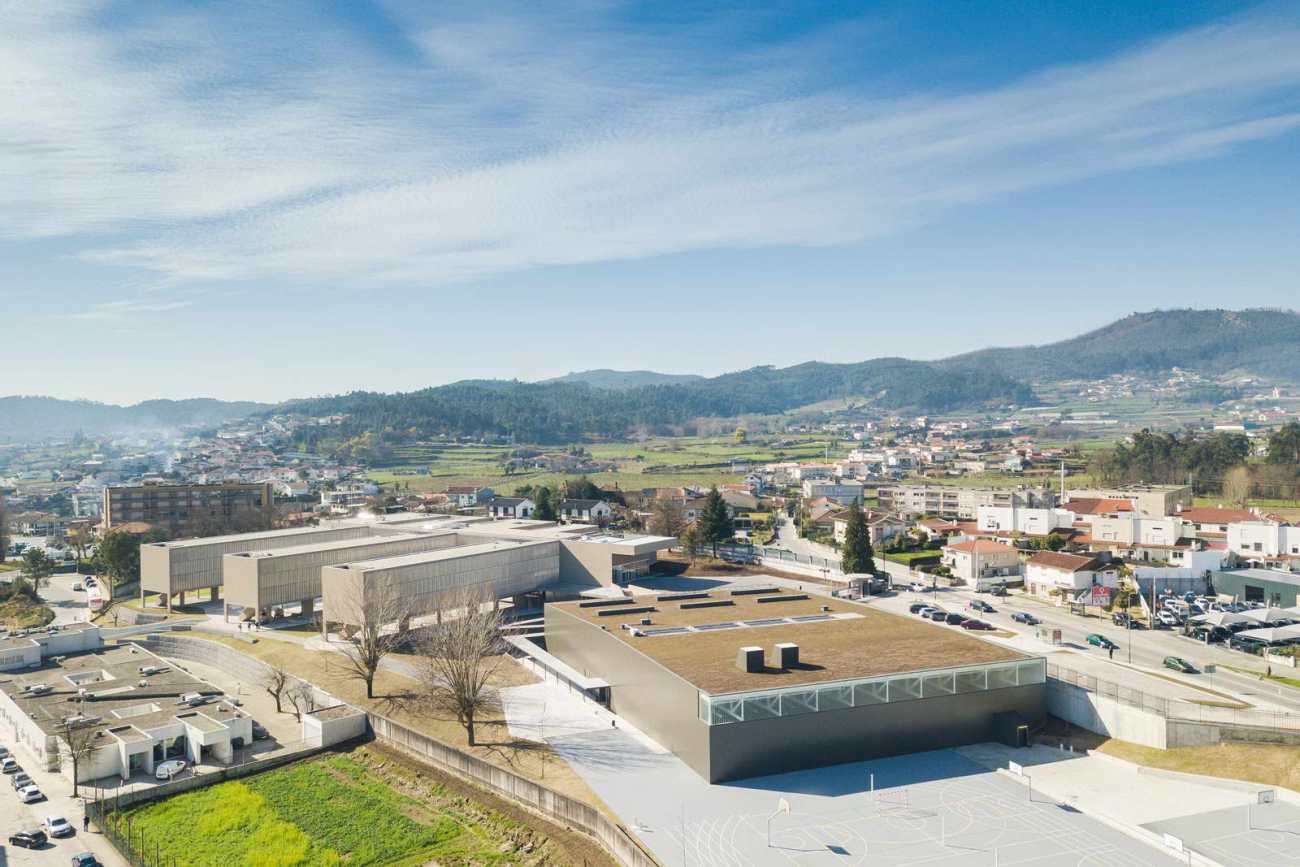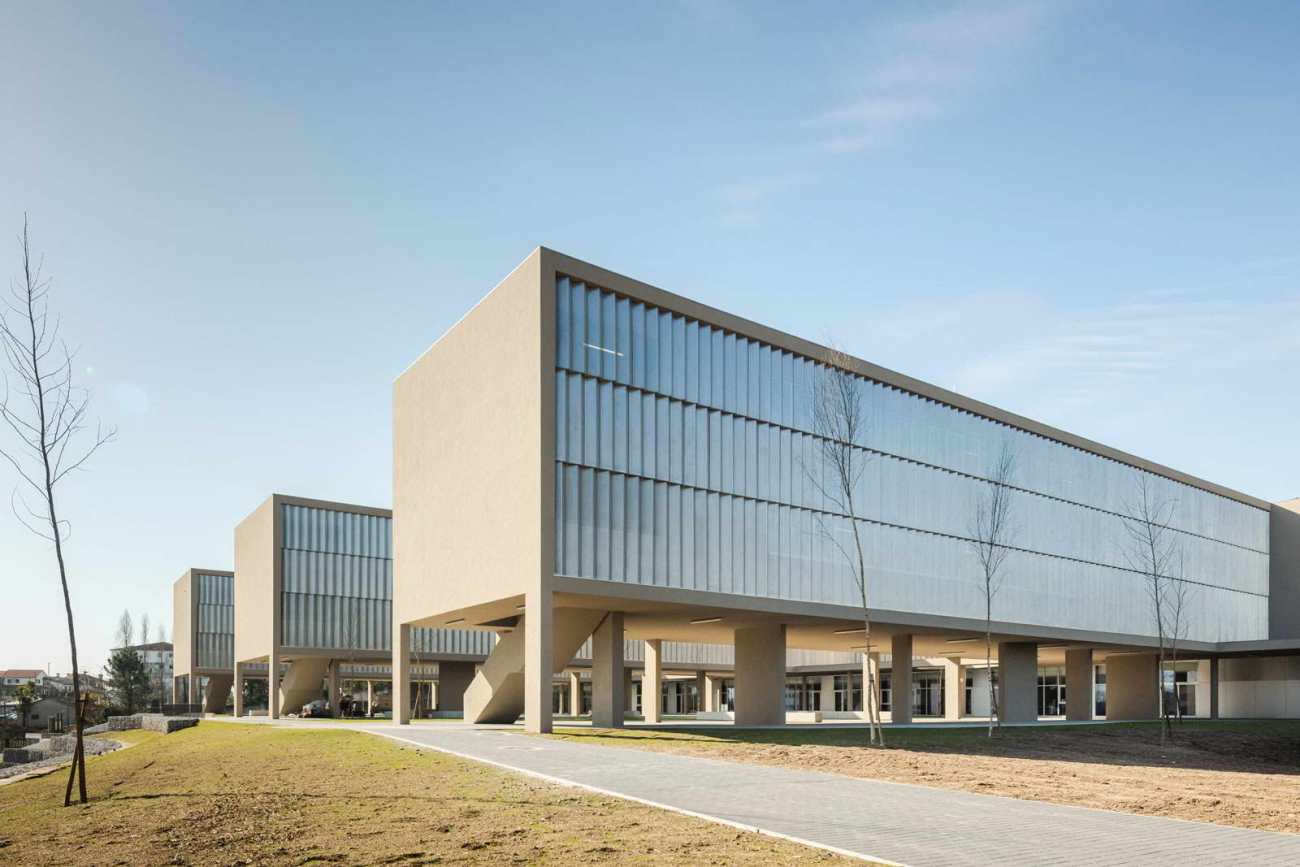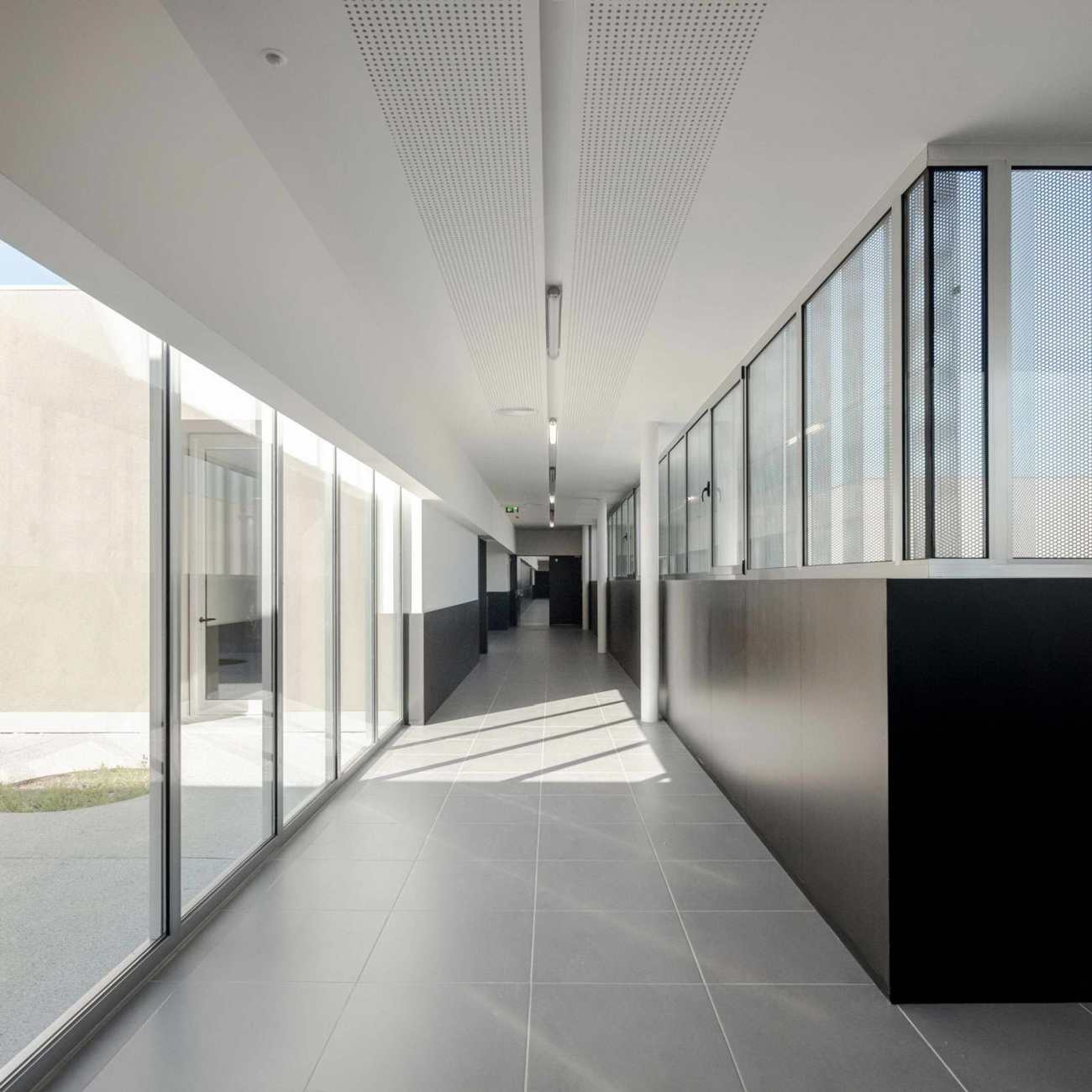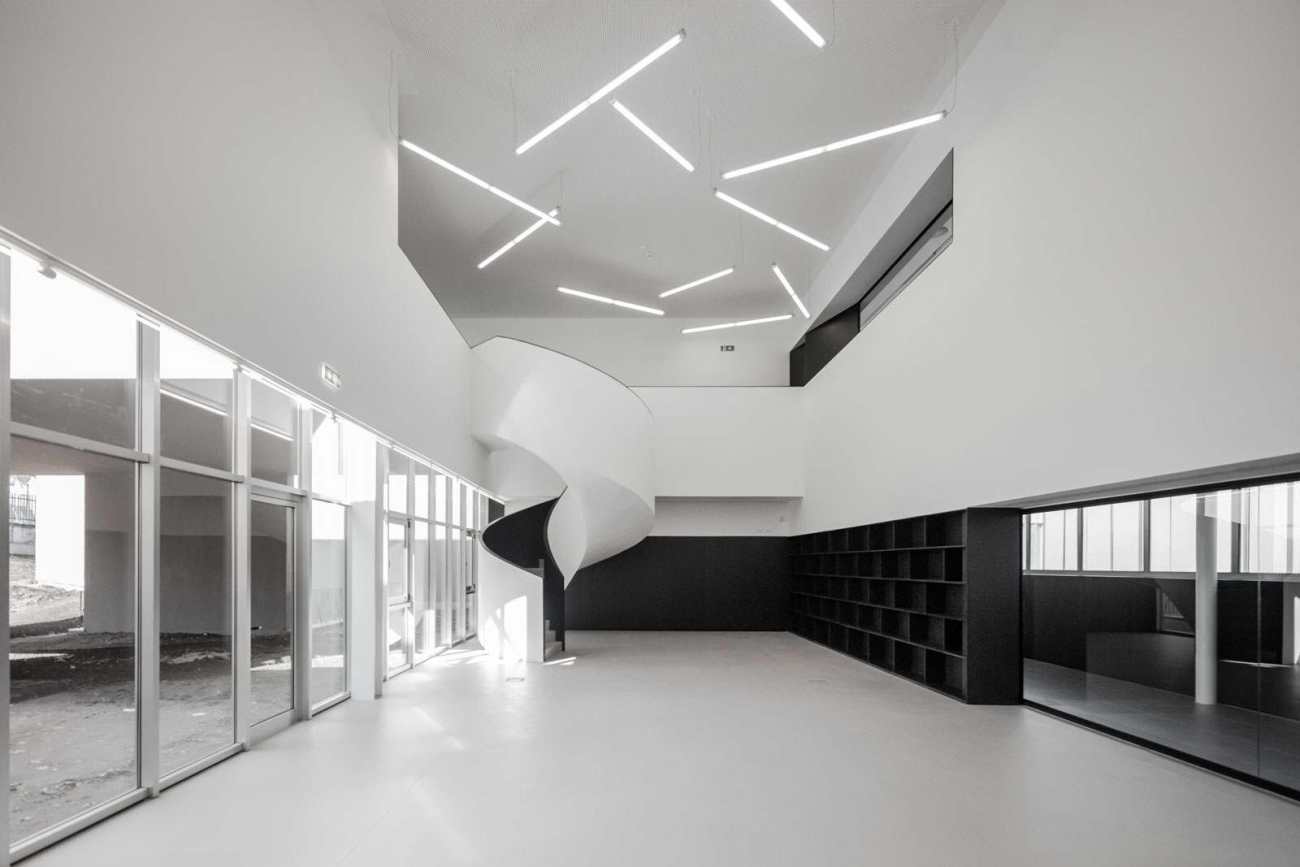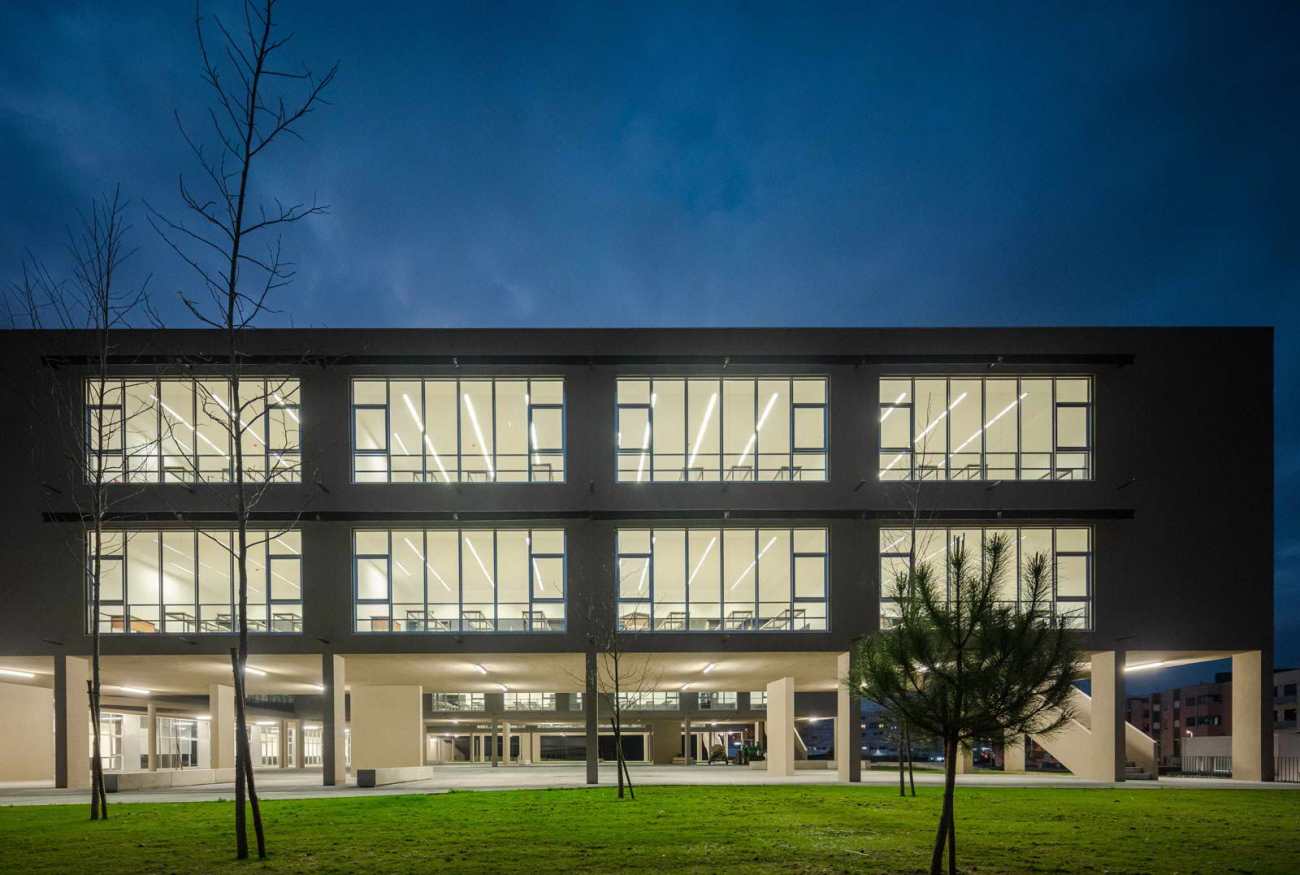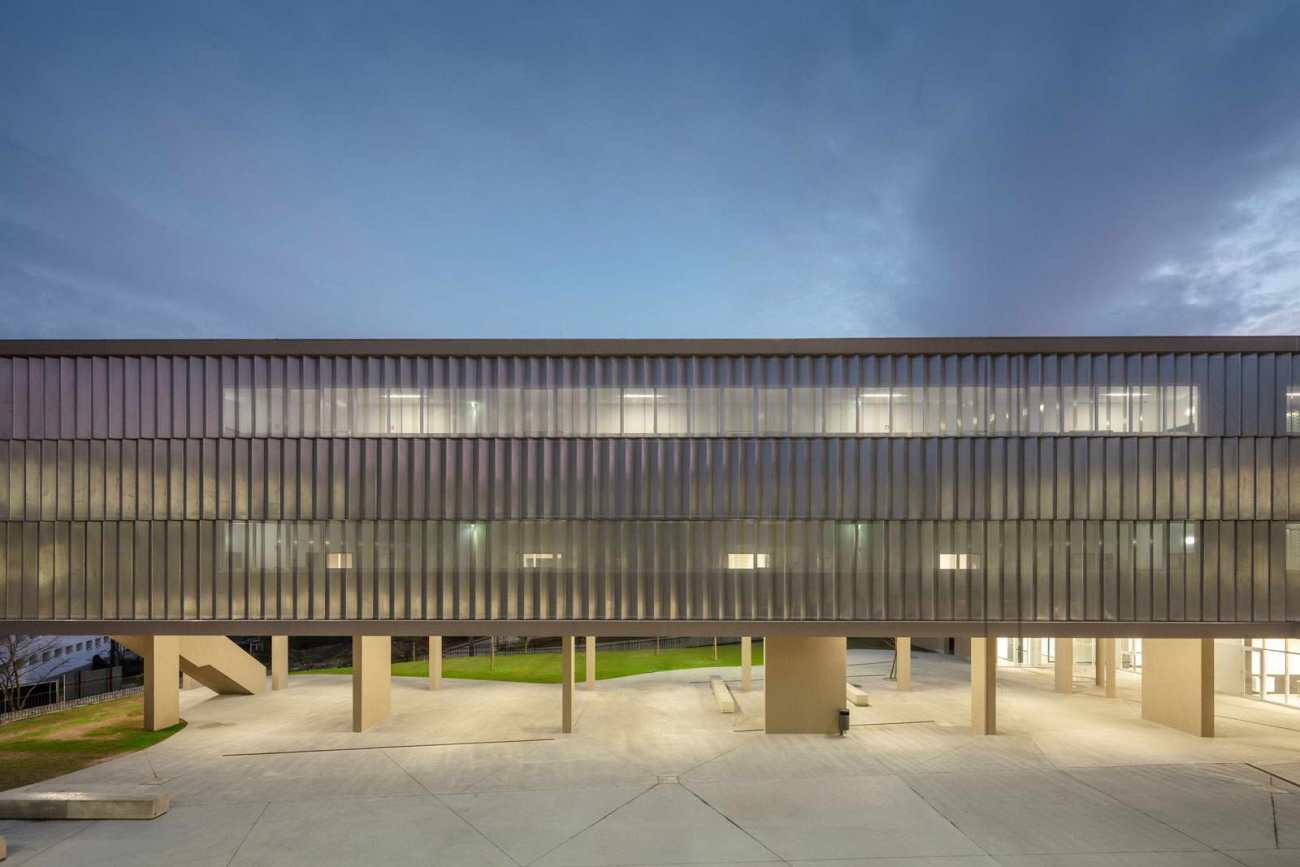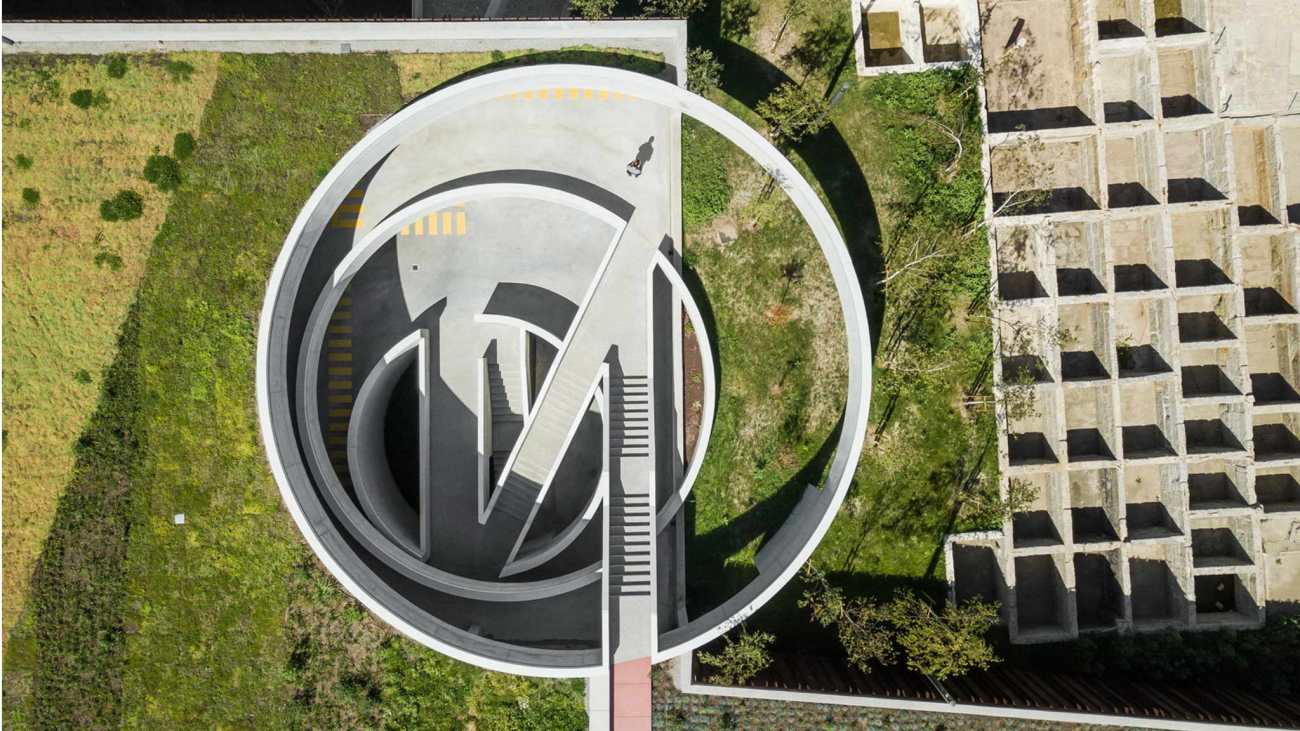| 公司: | Pitagoras Group | 类型: | 建筑 |
|---|---|---|---|
| 地区: | 葡萄牙 | 标签: | 建筑改造 | 校园 |
这所学校位于Taipas村中心附近,在一个已经非常稳定的城市地区,它是在另一所完全被拆除的现有学校的基础上建造的。从这个意义上说,设计的干预措施不仅旨在更换旧的学校设施,这些老旧的校园设施建立在一个功能完全失调的方案上,长期以来,已不再满足教学和学习的最低条件,因此我们还还建议对地形范围内的所有空间进行重新评估和规划,设计其外部空间、新的运动场、花园区甚至是新的学生娱乐区,与周围环境建立新的关系。
The school is located near the centre of Taipas village, in an already consolidated urban area and it was built from another existing school that was completely demolished. In that sense, the proposed intervention aimed not only at replacing the old school facilities, built on a totally dysfunctional scheme, which for a long time had ceased to meet the minimum conditions for teaching and learning, but also proposing the requalification and planning of all the space within the boundaries of the terrain, with the design of its exterior spaces, new playing fields, garden areas or even new areas for students’ recreation, establishing new relationships with their surroundings.
▽项目概览 Aerial
▽项目鸟瞰 Bird Viewing
项目开发的一套原则被选出来,举例来说:与任何建筑一样,功能组织和相应的功能层次,这是方便和愉快使用的基本条件,建筑力求在功能和空间组织方面有很大程度的明确性,从而转换成易于感知的建筑结构元素。尽管大大礼堂、图书馆和体育基础设施等辅助空间在很大程度上决定了其位置,人们还是考虑到了其与社区的关系。而且考虑到项目的复杂性和扩展性,地形特征、与现有平台的显著差异以及其规模小,因此采用了与现有解决方案完全不同的新建筑植入方案,这意味着建筑形式的大大简化。
A set of principles for the development of the project were selected and listed as follows. Functional organization and the consequent hierarchy of functions – fundamental for easy and pleasant use as in any building – seek to achieve a great clarity in its functional and spatial organization, which translates into an easy perception of the building's structural elements. The relationship with the community was also taken into account, namely with regard to the use of its complementary spaces, such as the auditorium, the library, and the sports infrastructures that, in large part, determine its location. The topographic characteristics of the terrain, with notable differences between the existing platforms, as well as its small size – taking into account the complexity and extension of the program – implied a great formal simplification, adopting a solution radically different from the existing one for the implantation of the new building.
项目包含了两个平台和四个建筑体量,我们可以轻松的将其辨别出来。第一个建筑容纳了上面提到的功能,我们认为它更公共,也可以被社区使用;而对于教室,我们创建了三个独立的体量,目的是将不同年龄的学生安置在不同的建筑体量里,有利于学生更合理的分布。在较低的楼层,房间直接连接到户外娱乐空间,所有的房间和各自的补充空间构成了视觉和技术教育的核心。几个天井创造了交叉通风与西面的光线,让建筑充满自然的采光。
Two implantation platforms and four functional areas – that we can identify and characterize – were defined for the building. The first accommodates the functions that, as mentioned above, we believe are more public or can be used by the community. For the classrooms, we created three autonomous volumes with the aim of making it possible to place the various age groups in different locations, achieving greater organization in the distribution of students. On the lower floor, directly connected to the outdoor recreational spaces, are placed all rooms and respective complementary spaces that constitute the nucleus of visual and technological education. Several patios were designed to create cross ventilation and the entry of light to the west, allowing the spaces to support classes and the circulation corridor to be also naturally lit.
▽三个教学楼体量 three volumes of classrooms
▽体量之间形成户外庭院 the outdoor recreational spaces
 | 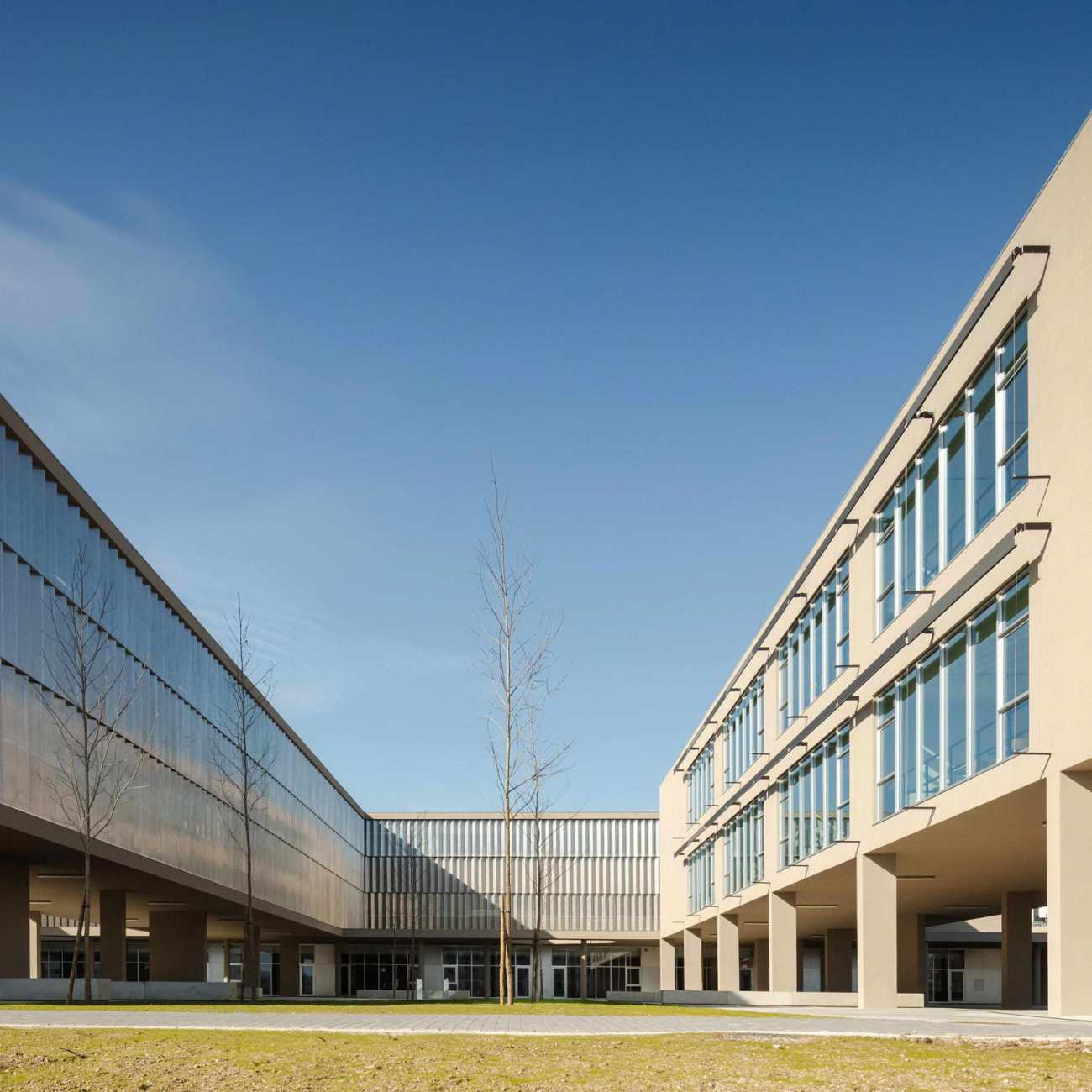 |
▽增加采光的天井 the patios letting the light cross
▽与室外空间连接的室内空间 the interior spaces connect the exteiror spaces
▽室内空间与室外空间的关系 the interior spaces connect the exteiror spaces
第四个功能区是由体育教育和运动的设施组成,即体育馆和运动馆。建筑体量靠着支撑墙,有一个很大的屋顶空间,与地面的花园空间融为一体。
The one that we define as the fourth functional area is composed of facilities for physical education and sport, namely the gymnasiums and the sports pavilion. The volume is leaning against the support wall and has a large landscaped roof, integrated into the garden space.
在这个意义上,三个用于教学活动的体量被抬高,为户外空间提供了宽阔的空间,并腾出了大片的户外和娱乐活动区域。考虑到地形大约有22,000平方米,我们可以获得大约16,000平方米的可用自由空间。
In this sense, the three volumes intended for teaching activity are elevated, providing the outdoor spaces with wide covered areas and freeing up a large area for outdoor and recreational activities. Bearing in mind that the terrain has approximately 22,000 m2, it was possible to obtain approximately 16,000 m2 of usable free space.
▽项目夜景
Project: EB2/3 Taipas School
Design Firm: Pitagoras Group
Location: Guimarães, Portugal
Design year: 2011-2013
Area: 10 460 m2
Collaborators: João Couto, João Carvalho, André Malheiro, Isabel Rodrigues, Luís Guimarães, Hélio Pinto
Foundations and Structures: Projegui
Hydraulic Engineering: Projegui
Mechanical Engineering: Layout
Electrical Engineering: Feris
Photography: João Morgado
更新日期:2020-09-25 15:31:19
非常感谢 Pitagoras Group 带来的精彩项目, 查阅更多Appreciations towards Pitagoras Group for sharing wonderful work on hhlloo. Click to see more works!

